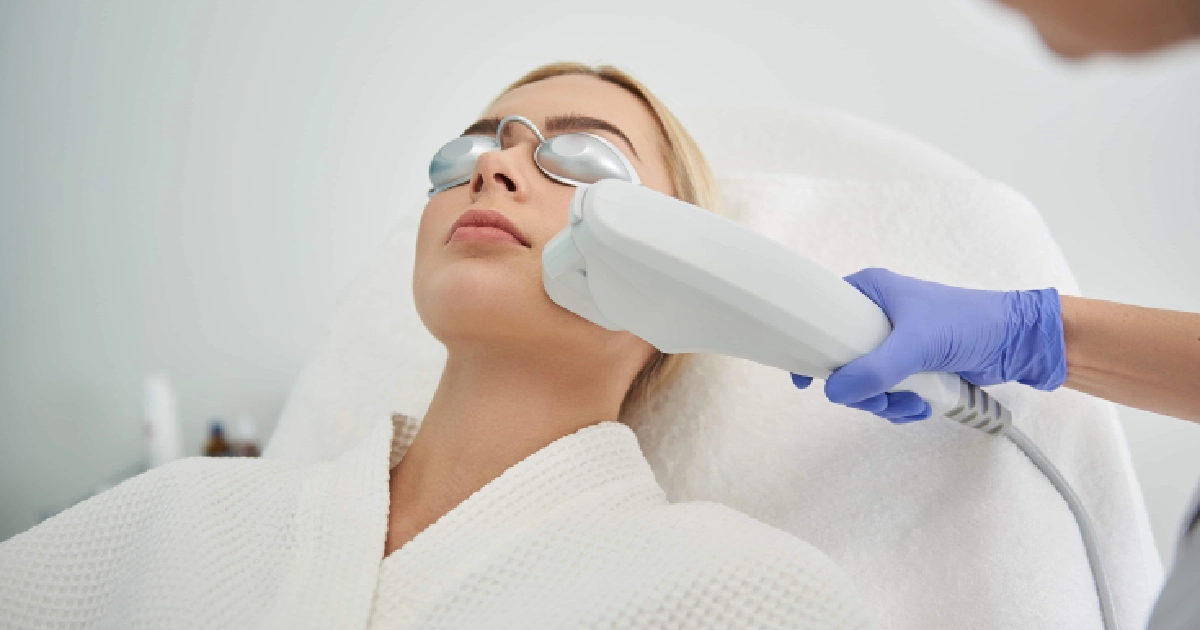Sun exposure has long been one of the main contributors to skin aging. Skin aging due to repeated UV radiation, also known as photoaging, can significantly accelerate the formation of fine lines, wrinkles, uneven skin tone, and hyperpigmentation. Although it’s nearly impossible to avoid the sun completely, there are ways to reverse its effects and prevent further damage. One of the most effective ways to restore damaged skin is through chemical peels, which exfoliate the outer layers and encourage the skin’s natural regeneration.
How Sun Damage Speeds Up Aging
Photoaging happens when the skin is exposed to ultraviolet (UV) rays over time. These UV rays damage the skin by breaking down collagen and elastin—proteins that keep the skin firm, smooth, and youthful. Over time, the damage caused by UV exposure adds up, resulting in the visible effects of aging: fine lines, wrinkles, dark spots, and loss of elasticity.
Collagen, the central structural protein in the skin, is particularly susceptible to UV damage. When exposed to sunlight, the skin absorbs these rays, which leads to oxidative stress and the creation of free radicals. These unstable molecules attack collagen, breaking it down more quickly than the body can repair it. Additionally, UV rays encourage the overproduction of melanin, the pigment responsible for skin tone, leading to hyperpigmentation and sunspots.
Signs of Sun-Induced Aging
It’s easy to spot sun damage on the skin. Initially, it may manifest as a rough texture or a dull complexion, but as the damage accumulates, more noticeable signs appear. These include fine lines, deep wrinkles, and pigmentation irregularities. Extended exposure to the sun also results in thinner skin and a reduction in elasticity, making the skin appear saggy and lifeless. Over time, the contrast between sun-exposed skin and areas that have been more protected becomes clear, showing just how much photoaging affects skin appearance.
How Chemical Peels Reverse Sun Damage
Getting rid of sun damage is easier than you think with chemical peels. These treatments concern the application of a chemical solution that exfoliates the skin, removing damaged cells to reveal a healthier, fresher layer of skin beneath. This process addresses superficial damage and stimulates the skin’s natural regenerative abilities.
How Chemical Peels Work
Chemical peels help the skin shed damaged layers and encourage regeneration. Dead skin cells slough off easier with these treatments because the acids break down the bonds between them. As these cells are removed, the skin is encouraged to produce new, healthier skin cells. At the same time, chemical peels stimulate collagen production, improving the skin’s firmness and elasticity.
The depth of a peel determines how much sun damage it can address. Lighter peels work on the surface layers, making them ideal for treating mild hyperpigmentation and rough texture, while deeper peels penetrate further to target wrinkles and severe sun damage. During the peeling process, acids like glycolic, salicylic, or trichloroacetic acid (TCA) are commonly used to break down the damaged layers of skin. As the skin peels, the body’s natural healing process takes over, encouraging the production of new skin and collagen, which leads to a smoother and more youthful appearance.
Benefits of Chemical Peels for Sun-Damaged Skin
The chemical peel’s exfoliating action offers numerous benefits for sun-damaged skin. The chemical peel removes damaged outer layers, reducing fine lines, wrinkles, and hyperpigmentation, leaving you with brighter, more even-toned skin. The peels also work deeper within the skin to stimulate collagen production, which enhances the skin’s elasticity and firmness. With repeated treatments, you can improve your skin’s texture, tone, and appearance over time.
Another significant benefit of chemical peels is improved skin hydration. Removing the outer layers allows moisturizers and serums to penetrate more effectively, ensuring the skin stays hydrated and looks plumper. This improved absorption helps to further protect and restore the skin after sun exposure.
Types of Chemical Peels
You can get chemical peels in varying strengths, depending on your skin type and how much sun damage you have.
1. Micropeel: Gentle Restoration
For those with mild sun damage, the Micropeel offers a gentle and effective solution. This treatment combines dermaplaning with a light chemical exfoliation to deliver smoother, brighter skin. The dermaplaning process clears dead skin cells and impurities, while the acid applied during the peel promotes skin renewal.
Unlike traditional peels, the Micropeel doesn’t cause visible peeling, making it perfect for those looking for immediate results with no downtime. After the treatment, the skin appears smoother, pores are decongested, and the overall tone of the skin becomes more even. The Micropeel offers an instant glow, making it a great option for anyone looking to rejuvenate their skin after minor sun exposure.
2. PCA Chemical Peel: Customized Care for Sun Damage
The PCA Chemical Peel offers a more tailored approach, allowing it to treat a range of skin concerns. Whether addressing superficial imperfections or deeper damage, this peel can be adjusted to serve individual skin needs.
During the treatment, a mix of chemical solutions is applied in layers to remove damaged skin and encourage healthy skin regeneration. As the skin heals, it becomes smoother, more even-toned, and refreshed. The peel’s customization ensures it meets each client’s specific goals, making it a versatile option for reversing sun damage, whether mild or more extensive.
3. ZO 3-Step Peel: Anti-Aging and Deep Rejuvenation
The ZO 3-Step Peel is designed for those looking for deeper, more intensive treatment. This peel penetrates beyond the epidermis, reaching into the upper dermis, where it stimulates collagen production and promotes cellular turnover.
The combination of salicylic, lactic, and TCA acids works to dissolve damaged skin, while a retinol cream encourages skin regeneration. This peel not only improves texture and tone but also targets deeper sun damage, making it a powerful anti-aging treatment. After the ZO 3 Step Peel, the skin is left smoother, brighter, and more radiant, with an overall improvement in moisture balance.
Takeaway
Sun damage doesn’t have to be permanent. With treatments like chemical peels, you can effectively reverse signs of aging and bring back your skin’s natural radiance. Whether you’re dealing with fine lines, sunspots, or an uneven complexion, a skin peel can help restore a youthful glow by promoting skin resurfacing and collagen production. These procedures work wonders when paired with consistent skin care, helping to maintain smoother, healthier skin long after your treatment.
At Grand Valley Laser Aesthetics, we offer a range of cosmetic procedures, including dermabrasion, microdermabrasion, and exfoliation techniques designed to target sun damage and rejuvenate your skin. With years of experience in dermatology and skin care, our team helps you find the right aesthetic services to achieve the fresh, radiant complexion you deserve.
Ready to turn back the clock on sun damage? Book an appointment for chemical peels in Grand Junction, CO, and start your journey to healthier, glowing skin today.



